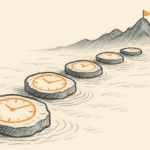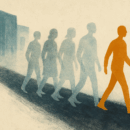How to reverse Nairobi’s crime epidemic
New York City, 1990: The unofficial crime capital of America, averaging over 2,000 murders and 600,000 serious felonies per year. A place where violence had become a way of life, where you took your life in your hands if you dared venture into the ‘no-go’ zones. A city reeling under the violent repercussions of a crack cocaine epidemic, when violent gangsters appeared to have taken over the streets.
Nairobi, 2004: The unofficial crime capital of Eastern Africa. Armed gangsters terrorise slum and suburb alike. Carjackings are so frequent as to be almost commonplace. Violent death is a real possibility facing all Nairobians. Even MPs are attacked with impunity. Firearms flow freely through the streets. The police force appears overwhelmed.
New York City, 2004: A dramatic reversal has taken place. The crime rate has been in steep decline throughout the 1990s. Murders have fallen by two-thirds; felonies have halved. New York is now officially the safest big city in the USA. It records crime statistics not seen since the 1960s.
How did New York do it? Throughout the 1980s, the city was in the grip of despair. No one could see a way out; no one could imagine a time when peace would return to the streets. Yet it did. We face the same situation in Nairobi today, and we must examine the lesson of New York and learn it well.
The New York transformation has its roots in a theory called “Broken Windows”. This theory, first expounded by two criminologists, says simply that crime is the inevitable result of disorder. If one broken window in a building is left unrepaired, people walking by will conclude that no one cares and no one is in charge. This sends a signal of “anything goes”, and creates a sense of anarchy. Very soon, more windows will be broken, and the problem will start spreading to other streets.
In this way, relatively minor infractions of the law like aggressive begging and public disorder are like broken windows: they are signals that no one is running the city. They are invitations to criminals to try something bigger. Muggers, robbers and carjackers thrive in conditions where potential victims already live in an atmosphere of intimidation. Journalist Malcolm Gladwell has written extensively about this epidemic theory of crime. Crime is contagious, and can spread from a simple broken window to the engulfing of an entire community. The lesson: fix the broken window immediately!
William Bratton was appointed head of the New York City Police Department in 1994. He came from a similar position in the subway system, where he had successfully put the Broken Window theory into practice. Now, he set about using the same strategies across the city. He asked all his officers to focus on ‘quality of life’ crimes: beggars demanding cash, fare dodgers, drunken louts, and the youngsters who defaced the city every night with graffiti. Even small infringements of the law such as persistent littering and minor property damage began resulting in jail sentences.
The result was as dramatic as it had been on the subway: crime began to fall, quickly and dramatically. Gladwell calls this the power of context – that potential criminals are acutely sensitive to the environment around them, and that their decision to commit crimes is based on an evaluation of the overall law-and-order situation. If they see obvious decay and collapse in values and authority, an epidemic will inevitably ensue. But like most epidemics, a crime wave can be reversed. The radical idea is that reversal demands, first and foremost, a focus on the ‘little’ things – so that a strong signal is sent about the return of authority and retribution.
Of course, Bratton did more than just scrubbing graffiti and arresting litterbugs. The police department was revitalised and equipped with better equipment. Modern training was introduced. Desk jobs were reduced and officers were redeployed back on the streets. Precinct commanders were made personally responsible for reducing crime in their own areas – and those who failed were fired. Community policing was introduced in order to prevent crime and gain better intelligence about gangs.
We need to do all these things in Nairobi, and more. We are today in total disarray when it comes to security. Each and every one of you reading this article has, in all probability, either suffered a violent attack in recent times or seen one inflicted on relatives or close friends. That spells epidemic, pure and simple. Step 1 is to face the facts. Our ministers need to stop pretending when addressing conferences and investors. Things are dire.
If disorder leads to crime, then what do we expect? Look around you. The garbage has grown from mounds to mountains. Violent muggings and (lynchings) take place in the central business district every single day. Thuggish street children roam the streets unchallenged. Men urinate in the streets with impunity. What are we telling the criminals? Total breakdown – it’s bonanza time.
At the same time, we have an unprecedented number of 20-30 year-olds on the streets, hungry and unable to secure any meaningful employment. We have one of the highest levels of economic inequality in the world, where sullen and increasingly desperate youths are forced to look upon a class of people who live the high life – and do it right in their faces. Add all that up, my friends, and you will start to hear the tremors beneath your feet.
Step 2 would be to reintroduce order. We have to crack down on drunken violence, molestation of women, and littering – and crack down hard. Officers have to be visible on the ground, picking up muggers and petty thieves. We all have to get involved in clean-ups, refurbishments and beautification initiatives. We have to show that there is order here, that there is civilisation and authority.
Step 3 is the most difficult of all, for apart from the visible signals of decay, we have also suffered an unprecedented collapse in management capacity. Today, we simply cannot run a police force. We cannot motivate officers to take pride in their uniforms and their station. We cannot gather intelligence and study crime patterns. Arrests are routinely botched. Restoring management processes, systems and motivation levels is the biggest challenge of all, and it is time we woke up to it. If we do, we can still save our country and ourselves.
Nairobi, 2008: Police Commissioner Ali, celebrating 4 years in his job and widely regarded as a national hero, announces that crime figures have fallen dramatically for the second straight year. Most of the gangs that used to terrorise Nairobians have been dismantled, their leaders dead or behind bars. The number of carjackings has fallen away remarkably after the distribution routes to neighbouring countries were cut off. After a successful force-management partnership with Germany that brought cutting-edge management techniques into Kenya’s police, the service is once again a good place to work. More young men than ever are applying. Nairobi is clean again, after a citywide campaign spearheaded personally by the first directly elected mayor in 2007. After two decades of despair, people care about their city again.

Buy Sunny Bindra's new book
The X in CX
here »
Popular Posts
- Where are you rushing to—your funeral?June 29, 2025
- The map will appear—once you start walking.July 6, 2025
- How to spot a real thinkerJune 15, 2025
- Built the app, forgot the flowJune 22, 2025











